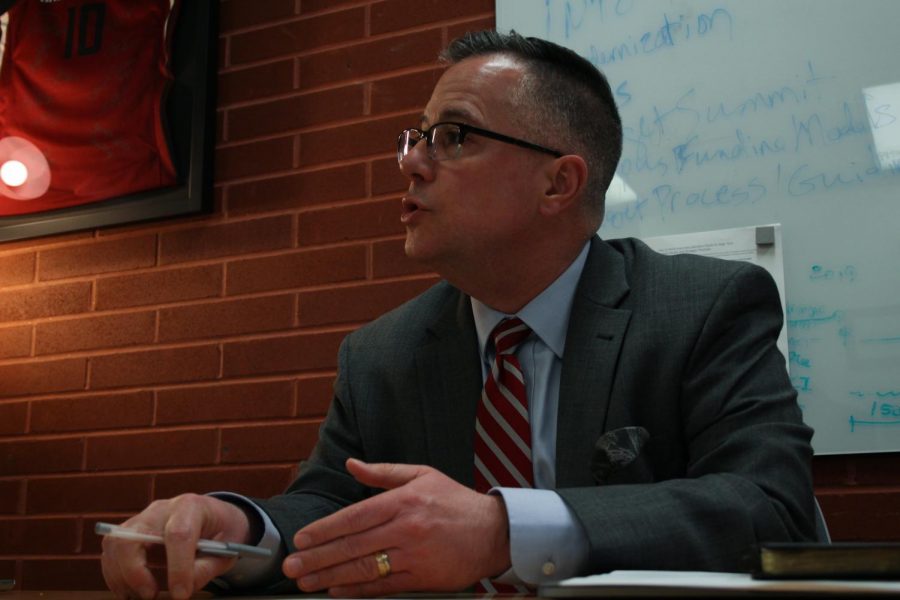Schulz says deficit to decrease by millions
Schulz says significant reductions include not hiring many faculty members
KIERSTEN BUTTERWORTH | THE DAILY EVERGREEN
Phil Weiler, vice president for university marketing and communications, discusses the strategic financial plan for WSU to become a top university by 2030 Tuesday night in the French Administration building.
February 8, 2019
The $30 million deficit at WSU caused by reserve overspending is projected to decrease to $3.5 million by the end of the 2019 fiscal year.
WSU President Kirk Schulz said he formed a fiscal health advisory committee comprised of student government representatives such as GPSA, Faculty Senate and other individuals. The committee provided advice on financial recovery and how they should allocate funds for certain projects.
Schulz said the deficit has a variety of causes. Some academic colleges overspent their budgets by $3-4 million each year.
“We also had several building projects we opened up on campus that we had not clearly identified money for,” he said.
Schulz said WSU did not identify a clear source of funds to build the Elson S. Floyd Cultural Center, as well as the remodeled football stadium and the WSU Football Operations Building.
He said the deficit was reduced from $30 million to around $8 million in the 2018 fiscal year.
“The way we did that was with spending reductions across campus,” Schulz said.
He said WSU saw a tuition and enrollment increase, which provided revenue that paid for some of the investments WSU committed to in the past.
Stacy Pearson, vice president for finance and administration, said 80 percent of the university’s budget is to pay for faculty, staff and student affairs.
Pearson said every department chose how to reduce their expenses by either laying off positions or reducing their travel expenses depending on how much they had in deficit spending.
Phil Weiler, vice president for marketing and communications, said they considered if it was critical to replace an open position or restructure the work to keep that position open. Most positions are state-funded, so if it is kept open, the university would still receive the salary and it can be used to pay off expenses.
Schulz said reducing the deficit was a combination of spending reductions in departments and an increase in enrollment revenues. Some of the most significant reductions included not hiring as many faculty members and laying off staff members in some cases about a year ago.
“Now we’re seeing the financial benefits of some of those types of decisions,” he said. “I don’t think people are gonna continue to see many effects of some of the spending reductions … this year.”
Schulz said one of the challenges the deans and vice presidents faced was the lack of access to good financial information about how much they had and where it was coming in.
Weiler said the current system used to track finances is old. The programming language is not taught in schools anymore, and there are few people who know how to support it.
“We need to have a modern finance and human resource system that allows us to track in real time what our spending is,” he said.
Pearson said they have started to implement the new financial system that will stop people from spending when they are out of money. The old system did not have this feature, and people had to keep track of their expenses and hope they were all accounted for.
The new system will be paid through a combination of revenues that were set aside, as well as funding from enrollment growth revenues, she said.
Pearson said they will also work on a new budget model to provide incentives for departments to increase their revenues.
“We made some changes in the way we operate so that we don’t put ourselves in this sort of fiscally challenging position again,” Schulz said.










